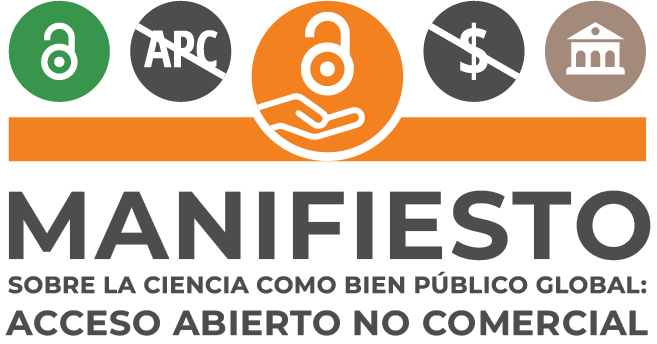In vitro use of provisional crowns fabricated using 3D printing technique with polylactic acid
DOI:
https://doi.org/10.69789/creaciencia.v17i1.737Keywords:
3D Printing, Polylactic acid, Provisional crown, Digital flow, Extraoral scanner, El SalvadorAbstract
Objective: To analyze the in vitro use of provisional crowns fabricated by 3D printing with polylactic acid. Materials and methods: A quantitative and descriptive approach was used. Thirty preparations in acrylic dental pieces were fabricated and scanned with the EG Solution DScan extraoral scanner using exocad’s DentalCAD software. The crowns were designed to be printed using the fused deposition modeling technique on the Qidi Tech X-one2 3D printer. Subsequently, inter-examiner agreement was verified to determine the marginal adaptation of the provisionals. Compression tests were performed using an MCS Metrology apparatus, model WAW 1000D. The color symmetry and the operating time required to manufacture a 3D provisional were determined using the Vita Toothguide 3D-MASTER. Results: The professionals agreed on a moderate marginal adaptation with a Cohen’s kappa value of 0.41, representing moderate agreement. The compressive strength generated a mean of eighteen megapascals. The working time for the printed provisional crowns averaged twenty minutes. Conclusion: It is concluded that the in vitro use of a provisional crown fabricated using 3D printing technology with polylactic acid (PLA) is feasible, given its practicality, reproduction of the dental anatomy and its adaptation. Recommendations: Further in vitro research is suggested to scientifically document the behavior of PLA in dentistry, investigating further physical, thermal, and optical tests to subsequently develop a second phase of experimentation in patients.
References
De la Garza Camargo O, Gutiérrez Cantú F, Romo Ramírez GF. ¿Qué son los provisionales dentales y cómo utilizarlos? Universitarios Potosinos [Internet]. 2018 [citado 2021 Jul 13];14(220):28-31. Disponible en: https://issuu.com/universitarios-potosinos-uaslp/docs/universitarios_potosinos_220
Abdullah AO, Tsitrou EA, Pollington S. Comparative in vitro evaluation of CAD/CAM vs conventional provisional crowns. J Appl Oral
Sci [Internet]. 2016 May-Jun [citado 2021 May 3];24(3):258-63. Disponible en: https://www.ncbi.nlm.nih.gov/pmc/articles/PMC5022219/
Jorquera, G; Schlesinger, N; Araya T. Guía de procedimientos preclínicos - Secuencia Clínica de técnicas de provisorio [Internet]. 3.ª ed. Santiago (CL): Facultad de Odontología, Universidad de los Andes; 2017 Ago. 32 p. Disponible en: https://www.uandes.cl/images/biblioteca/2017/Odo/Tecnicas%20para%20provisorio%20.pdf
Christiani JJ, Devecchi JR. Materiales para Prótesis Provisionales. Actas Odontológicas [Internet]. 2017 Jul [citado 2021 May 04]; XIV(1):28-32. Disponible en: http://www.scielo.edu.uy/pdf/ao/v14n1/2393-6304-ao-14-01-00028.pdf
Khorsandi D, Fahimipour A, Abasian P, Saber SS, Seyedi M, Ghanavati S, et al. 3D and 4D printing in dentistry and maxillofacial surgery: Printing techniques, materials, and applications. Acta Biomater [Internet]. 2021 Mar 1 [citado 2021 May 7];122:26-49. Disponible en: https://doi.org/10.1016/j.actbio.2020.12.044
Levy GN, Schindel R, Kruth JP. Rapid manufacturing and rapid tooling with layer manufacturing (LM) technologies, state of the art and future perspectives. CIRP Annals [Internet]. 2003 [citado 2021 Jul 4];52(2):589-609. Disponible en: https://www.cirp.net/images/cirpfichiers/annals/2003/2003-52-2-0589-E.pdf
Serna Cock L, Rodríguez de Stouvenel A, Albán Achinte F. Ácido poliláctico (PLA): propiedades y aplicaciones. Ingeniería y Competitividad [Internet]. 2003 Ene 4 [citado 2021 Jul 4];5(1):16-26. Disponible en: https://doi.org/10.25100/iyc.v5i1.2301
Hernández Silva ML, Guzmán Martínez B. Biopolímeros empleados en la fabricación de envases para alimentos. Publicaciones e Investigación [Internet]. 2009 Ago 14 [citado 2021 Jul 4];3(1):103-29. Disponible en: https://doi.org/10.22490/25394088.572
Ulloa Matus P, Poblete Gómez D. Análisis de impresoras 3D. Guía para realizar una correcta elección para el uso clínico odontológico [tesis para optar al postítulo de Especialidad en Rehabilitación Oral]. Concepción (CL): Universidad del Desarrollo; 2018. 53 p. Disponible en: http://hdl.handle.net/11447/2778
Canals Conde S. Estudio “in vitro” de coronas provisionales de ácido poliláctico (PLA) confeccionadas mediante impresoras 3D [trabajo final para optar al título de Máster en Ciencias Odontológicas]. Madrid (ES): Universidad Complutense de Madrid; 2017. 74 p. Disponible en: https://hdl.handle.net/20.500.14352/19857
Molin MK, Karlsson SL, Kristiansen MS. Influence of film thickness on joint bend strength of a ceramic/resin composite joint. Dent Mater [Internet]. 1996 Jul [citado 2022 Oct 22];12(4):245-9. Disponible en: https://doi.org/10.1016/S0109-5641(96)80030-3
Downloads
Published
Issue
Section
License
Copyright (c) 2024 Brenda Nathaly Alfaro Ortizo

This work is licensed under a Creative Commons Attribution-NonCommercial-ShareAlike 4.0 International License.
Los artículos de Crea Ciencia están publicados en acceso abierto bajo una licencia CC BY-NC-SA 4.0 de la Universidad Evangélica de El Salvador.





















